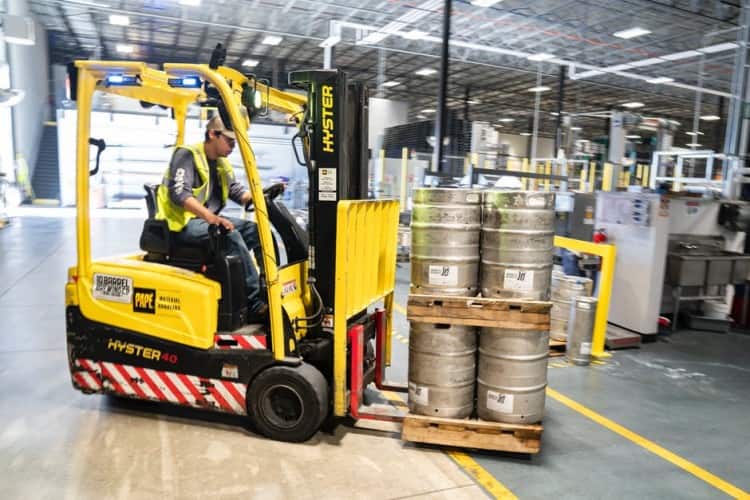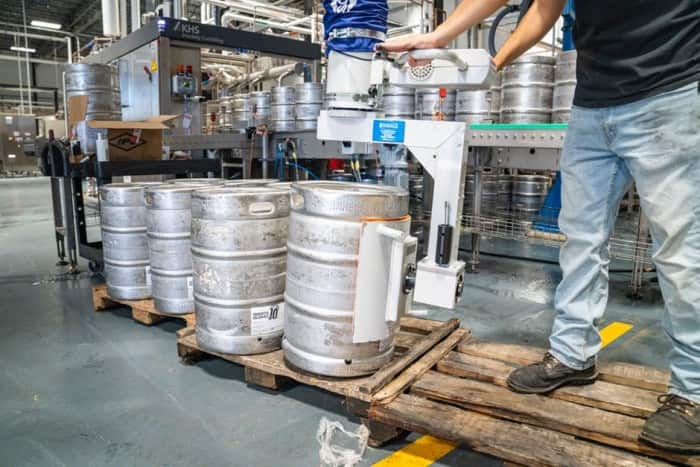
It would be sheer folly to try to claim there was only one way to manage a Temporary warehouse – it all depends on the actual Temporary warehouse and the nature of its supply chain. However, the certain common principle should and can be applied. Of course, conversely, that means there are also several ways that companies can make mistakes.
In order to help you keep up with your Temporary warehouse management and make sure that unnecessary supply chain costs are not generated by your storage facilities, review the following eight common mistakes made with warehousing. If you are able to identify signs of any of these issues being present, make sure you make it a priority to take remedial action.
However, if your Temporary warehouse is free of the problems already, then it can still be a good idea to note them anyway and stay vigilant. Things can slip at times, especially when you are busy.
- Holding On To Excess Inventory

Despite all of the knowledge being disseminated for years within the warehousing field, which encourages inventory reduction and lean practice, one of the most mistakes made in warehousing by supply chain organizations all over the world is having too much inventory stored.
Reducing levels of inventory as much as possible will make your supply chain a lot leaner and less of your money will be tied up in carrying stock. So whenever one of those discounts comes along that is too good to pass up, it is worth it trying to make arrangements with a supplier to have big orders delivered in smaller quantities, when and as you need them.
- Failure To Optimize Picking Paths
Planning efficient picking paths through the Temporary warehouse is another common warehousing mistake – which can negatively impact your picking rate. In turn that can impact your supply chain cycle time, and result in excessive labor costs due to sub-optimal productivity.
Your Temporary warehouse operatives ideally should be able to get each picking run completed at a location near your Temporary warehouse dispatch area. However, creating optimal picking route isn’t always easy But it is definitely worth it to take the effort and time to make sure to make them as efficient as you can.
- Cling To Paper Processes
Holding onto paper-based, inefficient workflows and failing to make use of technology is a common warehousing mistake especially for a lot of small organizations.
Although you may think your small warehousing or logistics operation is better off to keep things basic, paperwork has the opposite effect actually: it bogs your processes down and leaves you vulnerable to delays which result from misplaced or lost documents. You will generate more efficiency when you switch over to digital information transmission and storage.
There are many effective, yet simple workflow software application that is available, which will all serve you better than having a long trail of numerous paper documents. When you eliminate your paper-based processes, it will help the environment as well as save you money on your consumables.
- Not Enough Attention Paid To Housekeeping
Overfilled pallets, aisles littered in shrink-wrap, and messy loading docks. Those are all symptoms of lack of love for your Temporary warehouse.
In order to eliminate the building-up of clutter and mess, a strict housekeeping regimen should be enforced, and a specific amount of time should be devoted to tidying and cleaning at the end of every shift. That is the best time to tidy up your Temporary warehouse space and allows the next shift to start productive work without delays due to clean-up activities.
- Inadequate Safety and Health Management
Even when your Temporary warehouse is tidy that doesn’t necessarily mean it is safe. Good safety and health management in a Temporary warehouse are all about watching out for hidden hazards along with those that are obvious. However, all too often, safety and health get overlooked in hectic warehousing operations. What the problem is, it is easy to have a false sense of safety as long as your employees are not getting into accidents.
Temporary Warehouses are dangerous working environments inherently, so it is essential to get into the habit of near misses and accidents being reported, analyzing what the causes are and take actions to eliminate them. It definitely can save costs and save a few employees from getting seriously injured also.
- Neglecting Your Goods-In Processes

Whenever the pressure is to forgetting customer orders out of Temporary warehouse and sent out on time, sometimes the inbound part of your operation can suffer due to lack of attention. However, goods-in receiving has a critical role in effective warehousing and something you should not neglect.
Intake procedures may be very specialized, so it isn’t an area where you should randomly assign staff. However make sure you have other Temporary warehouse employees who are well trained in goods receiving, in the event you need to have back-ups for covering holidays or staff illness.
- Ignoring Staff Development
Sometimes having a tight budget means that development and training activities are not prioritized the way they should be. However, your most important asset is your employees. If you do not identify what your development needs are and provide your staff with individual growth opportunities, then the most likely outcome is higher staff turnover.
It costs a lot less to keep your existing employees engaged and motivated than to have to fill vacated positions. So make sure to devote some resources and time to staff developing and training, even if you have to hire temporary staff at times so that your permanent employees are covered while they are being trained.
- Not Measuring The Correct Things
Most companies these days do some measuring of Temporary warehouse performance, but that hasn’t always been the case, even though they’re an increased awareness of needing to have key performance indicators, there are still lots of organizations that fail to properly measure Temporary warehouse operations.
If you are able to avoid making that mistake with your Temporary warehouse operations, that will help you steer clear of many of the other problems as well. For example, let’s look at mistake 6 again.
As mentioned previously, at times goods receiving can end up a backwater, however, when the correct KPIs are put into place, it will result in performance remaining front and center and typically processes such as dispatch and picking will receive more attention.
Some of the common-sense metrics that can be applied to goods receiving include “time from receiving to put away” and “truck time at unloading dock.” These two KPIs together will help you find ways of optimizing receiving processes and reducing the time it takes to move inventory from limbo.
